The modern form of antivirus, especially for end users, is an application that helps to detect, remove and even prevent malware infections. Paid and free antivirus products do have significant differences if the user is savvy enough to know which one works best in what situation. But both list security features and added benefits on official websites. That should be the starting point for any user looking to decide between a free antivirus and a paid antivirus. Going through a complete cost-benefit analysis is a critical step. Free and paid antivirus products both need certain user requirements without which users will stay away. Such requirements include a modern user interface, themes that make antivirus apps easy to use, multiple scanning options, automatic updates, widespread compatibility, online protection, fast customer support and bonus features. Both free and paid antivirus products have limitations that potential consumers should go through before deciding. So, which one wins in free antivirus vs. paid antivirus?
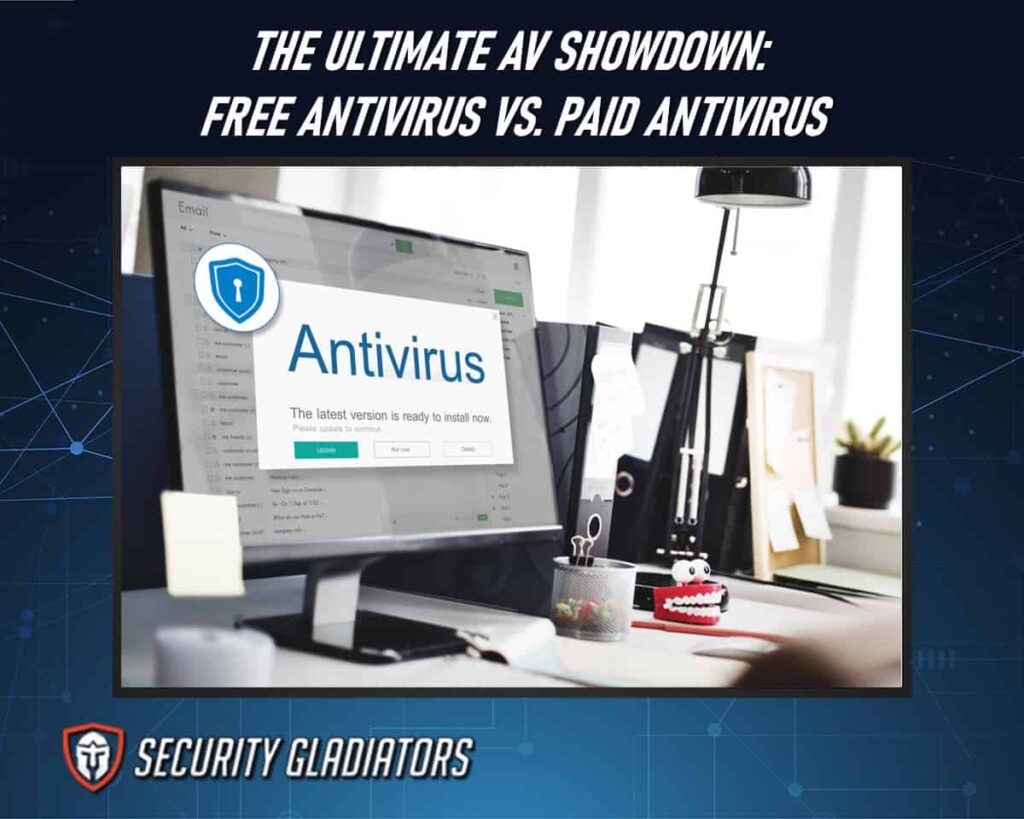
Table of Contents
What Is an Antivirus?
Antivirus products are programs that protect computers from cyber threats, like keyloggers, rootkits, botnets, man-in-the-middle attacks, spyware, worms and viruses. Some antiviruses also protect against ransomware. Just like any other software, antivirus applications come in different shapes and sizes. But the core function of an antivirus application is to keep devices safe from malware and remove any if the device gets infected.
To keep devices clean, antivirus programs make use of different techniques, such as filtering, machine learning, database detection and others. All antivirus programs come with scanning tools that users have to run from time to time to allow the antivirus program to find and remove malware. As newer forms of viruses are appearing all the time, developers of antivirus programs have to make sure definition databases are up to date at all times.
Free Antivirus vs. Paid Antivirus: What Separates Them?
Free antivirus programs offer basic antivirus benefits and basic protection against modern cyber threats. Premium antivirus products are usually faster than free antivirus when responding to new threats. Free antivirus products usually only offer the tried and tested methods of keeping devices clean, because there is no budget to try new methods. The differences between free and paid antiviruses are given below.
Security Features and Benefits
Free antivirus products usually only offer the most basic security features to protect against malware. Such features include basic scanning tools and semi-regular updates. Free antiviruses can sometimes not detect viruses via scanning tools. Most free antivirus products that are effective at finding malware aren’t when removing malware. Instead, free antivirus products only push out notifications to inform the user about a potential problem. Free antivirus products also vary tremendously in terms of the number and quality of security features offered.
Free antivirus products may give the impression that users are getting so many security features while paying no money, but the reality is different. Paid antivirus programs make use of multiple advanced techniques to prevent potential cyber threats. Protection against ransomware is just one critical feature that almost no free antivirus offers. Almost all the elite paid antivirus programs have protection components for ransomware. The list of security features in paid antivirus products is more comprehensive. Paid antivirus programs don’t just stop malware from infecting a device but also guard against other threats, such as identity theft and man-in-the-middle attacks. Paid antiviruses usually also offer features such as parental controls, system performance-enhancing options, password managers, secure browsers, VPNs, firewalls and shredders. These antiviruses protect from threats such as zero-day attacks, ransomware, brute force and any malware that tries to uninstall the antivirus and other apps. Free antivirus apps usually do not have such additional protection components.
Cost-Benefit Analysis
The cost-benefit analysis will give different results to different users. Depending on the needs and requirements of an organization or user, the answer to the question of free antivirus vs. paid antivirus may change. Some antivirus companies offer the same product both for free and paid. In such situations, the developers of the antivirus product simply disable some features for free users. The core protection component of the antivirus remains the same for both paid subscribers and free users. In that situation, the cost-benefit analysis usually favors the free version.
Buying the most expensive antivirus product will not make sense for certain organizations and users. If the cost of the product is not within the budget, then the added protection is counterproductive. For organizations and users that engage in sensitive tasks regularly, free antivirus risks definitely outweigh the benefits. Free antivirus products simply do not have the required features to react in case of a security breach or any other major security event. For organizations with a cyber insurance policy, the list of antivirus products to keep all the infrastructure safe will differ from an organization that does not. Sometimes, the total cost of insurance changes based on the specific tool that a particular organization is using.
Organizations with little to no sensitive data online may not need a comprehensive and expensive antivirus solution. The same goes for companies that aren’t usually targeted in security breaches. Some organizations, even with sensitive data stored on cloud servers, may find that the free version is more than enough for the problems at hand.
User Interface
Both free and paid antivirus products can have bad user interfaces. But, usually, paid antivirus products have a more bearable user interface because there are no advertisements or upsell offers displayed. Some of the top free antivirus products, though, offer the same user interface for both paid and free versions. Antivirus companies sometimes develop two completely different products for paid and free users. In such cases, the paid version is generally vastly superior user interface-wise to the free version.
There is also the problem of free antivirus products not investing many resources in having a flexible user interface for different sizes of screens and devices. Paid antivirus products usually have dedicated apps for different operating systems. This allows users to experience an effective user interface no matter the device.
Ease of Use
When talking about elite antivirus products, both free and paid antiviruses virtually score the same on ease of use criteria. Almost all elite antivirus products allow users to simply download a program, go through the installation process and start using the security tools available with no issues.
But moving away from elite antivirus providers, things change drastically between free and paid antivirus products. Sometimes, the download and installation process is easy enough, but once new users get to the actual application interface, the sheer amount of information proves intimidating.
Elite paid antivirus products usually have an easy-to-understand download and installation process and an easy setup. Paid antivirus products also stay out of the way of the user, quietly working in the background. Performing at a high level without bothering the user also increases ease of use. Free antivirus products sometimes bother the user with too much information about which features are unavailable and all the add-ons the user can sign up for increasing protection.
Automatic Updates
To protect sensitive data, antivirus products must have information regarding the latest types of cyber threats. The only way for antivirus products to prepare for new cyber threats is via timely and regular updates. Antivirus products that automatically launch the update process get bonus points.
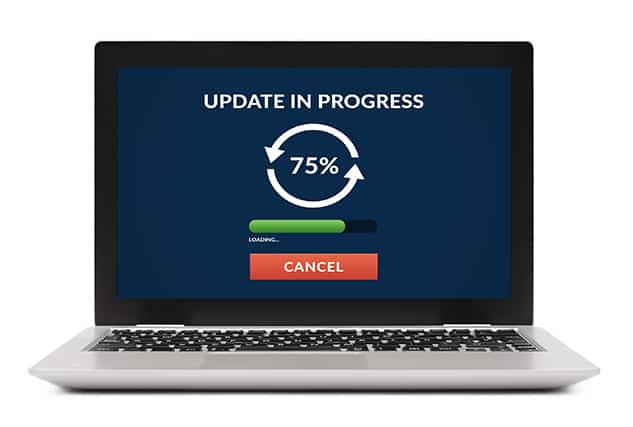
Free antivirus products usually do not get automatic updates. When free antivirus products do get updates, the process is usually not automatic. So free antivirus users often have less protection, especially from newer forms of cyber threats.
Paid antivirus products usually have the resources to not only keep up with cybersecurity but also develop fixes to secure users against the latest threats. Free antivirus products aren’t as good against threats like ransomware.
With paid antivirus products, users not only get database definition updates but also app upgrades and feature additions, which further enhance the overall security of the user’s device.
Scanning Capabilities
Free antivirus products only have one or two types of scans available. And most of the scans don’t run automatically. The user has to actually open the app and press the button for the scan to start the process and then delete problematic files.
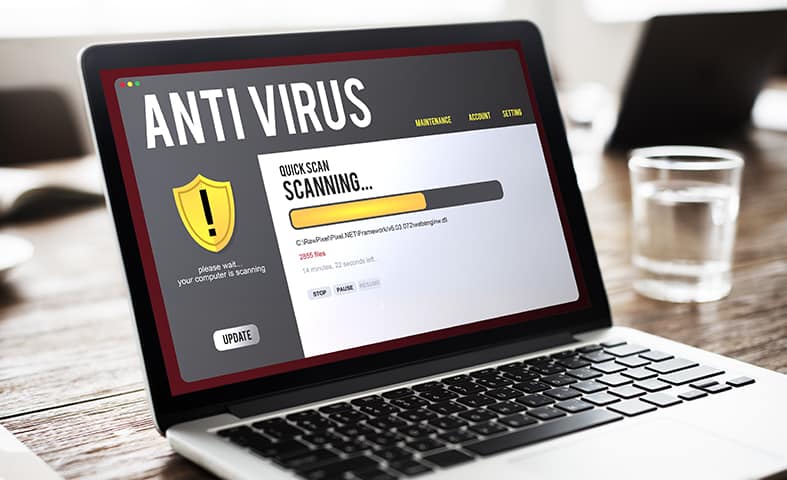
Paid antivirus products offer multiple scanning options. These products also offer more control over how the scans are performed. Users can either go with a full system scan or only scan a particular file or folder.
Free antivirus products have scanning tools less effective than paid ones because of a better update schedule on paid antivirus products. Of course, free antivirus products do protect users from malware and viruses when the scans are launched, and the results analyzed.
Paid antivirus products go one step ahead and look for malicious code on the user’s device with real-time monitoring, detection and removal. Paid antivirus applications can also detect and remove more types of malware, much faster, while consuming fewer resources. That is especially the case for antivirus products that enable cloud support for paid customers.
Online Protection
No free antivirus product on the market offers reasonable online protection. Most free antivirus products work on a reactive basis in the sense that once the machine gets infected, free antivirus apps move in and clean up. Paid antivirus products are not only proactive but extend the boundaries from where the protection starts for the user.
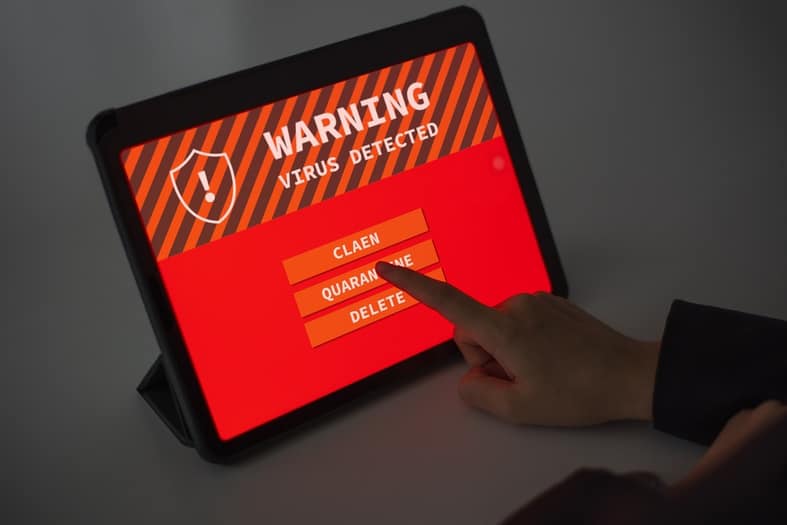
For example, paid antivirus products usually come with premium add-ons for web browsers. Such security add-ons keep users away from phishing attempts and malicious websites. Free antivirus products usually have no such components. Even on the ones that have such measures, the protection is very limited and basic.
The best paid antivirus products have multiple components to keep users safe online. First, paid antivirus software comes with secure browsers. These browsers offer extra privacy and security for users who engage in sensitive tasks online. Sensitive tasks include banking, medical record checking and shopping. Other paid antivirus products offer Browser Guard add-ons that disable ad trackers, cryptojackers and other modern threats. A few can even mark search results on popular search engines to help users access only the most trusted and safe websites.
Compatibility With Operating Systems
Paid antivirus products far outrank free versions because of a lack of support. Free antivirus products are usually cash-strapped. And to make the business sustainable in the long run, the developers skip developing dedicated apps for different devices and operating systems. That means users have to install separate antivirus products on different devices.
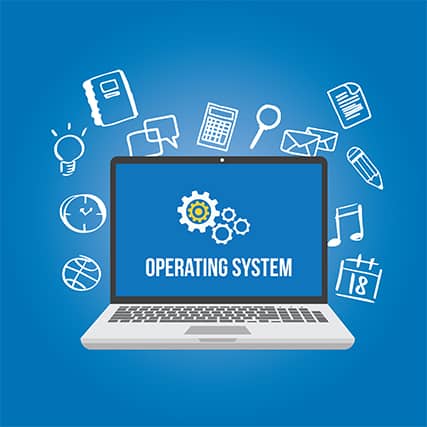
With paid antivirus products, users get dedicated apps for all major platforms such as macOS, Android and Windows. The mobile apps ensure users can protect any device in real time with a single subscription. Many paid antivirus products also offer huge discounts for users who sign up for multiple devices rather than a single one.
Free antivirus offerings also have the tendency to simply stop working suddenly on various operating systems. The Kaspersky free antivirus is a great example since Kaspersky is considered one of the best free antivirus products on Windows. But Kaspersky free antivirus has no support for macOS devices. Even the Android device app does not have real-time protection enabled.
Note:
Free antivirus products usually limit the amount of time the user can protect a device on any given operating system. That means that after a certain time, the user has to move to another product. Paid antivirus products have no such issues since the service remains in an active state as long as the subscription is valid.Technical Support
Paid antivirus products offer better customer support via live help available 24/7. Having technical support available in a security breach is critical for organizations and some individuals. With proper technical support, the user can not only have the device data restored but also stop the malware from spreading to other devices or uninfected areas of the same device. For individual users, technical support is a nice add-on, but for businesses, technical support is essential.

Paid antivirus products usually offer more options when deploying an antivirus solution. Even during operation, paid antivirus products can offer more support.
Free antivirus products almost never come with 24/7 technical support. Unlike paid antivirus solutions, free antivirus products do not have the resources available to restore an infected device. When a security breach takes place, the individual or organization has to come up with solutions without any help from the antivirus solution vendor. Free antivirus products also do not offer security guarantees, which is common among elite paid antivirus solutions.
Add-ons and Extra Functionality
A paid antivirus product can offer extra features, unlike free ones. These features include identity protection, a password manager, web protection tools, anti-ransomware tools, an anti-phishing component, parental control, a firewall and a VPN.
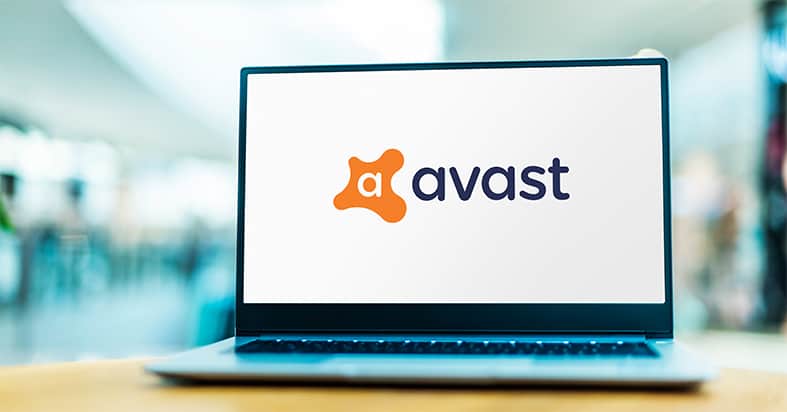
Some examples are Avast (which comes with a dedicated browser) and Kaspersky (the premium package comes with a VPN, a vault for keeping notes safe and anti-ransomware protection). Even though the basic protection is the same for both paid and free users in Kaspersky, only the paid users get extra feature access.
Limitations of Free Antivirus
The biggest limitation of free antivirus products is incomplete protection. All free antivirus applications only offer a basic level of security against cyber threats. Advanced anti-malware programs and firewalls that can handle modern cyber threats are only available for paid subscribers. Free antivirus programs are only effective against certain types of cyber threats. Some users have multiple free antivirus programs to enhance protection, but such arrangements may not yield the desired results. Free antivirus programs generally do not work well with other antiviruses installed on the same machine.
Another limitation of free antivirus programs is the advertisements and frequent reminders of upgrades. The fact that free antivirus programs do not have much customer support is another problem not just for individuals but also for companies. Free antivirus developers don’t generate revenue from customers and hence can’t afford customer support of any kind, let alone technical support that actually solves problems. That makes searching for potential problems with a free antivirus is time-consuming. Other issues that routinely pop up with free antivirus programs include a lack of compliance with data-sharing laws, lower scanning performance and longer times for completing scans. The best paid antivirus products are free from such defects.
Common Complaints About Paid Antivirus
Customers of premium antivirus products frequently complain about dubious pricing structures and how the increase in price doesn’t improve the antivirus program. Cost is another complaint among paying customers. Sometimes, users have to pay over $100 for complete protection. There are a few paid antivirus products that require payments for future upgrades, which can further drive up costs. Another complaint about paid antivirus is an overwhelming number of extra features. While extra features are nice-to-have, the vast majority of users only want enhanced protection against malware and other cyber threats. Users end up paying for features that are never used.
A less frequent problem of paid antivirus products is speed. Since paid antivirus programs have so many additional components running besides the core anti-malware component, paid antivirus apps slow systems down by using processor resources and memory. The best free antivirus programs may not hog resources, and users may end up using all the features on offer without paying anything.
Conclusion
While both free and paid antivirus products have advantages and disadvantages, the disadvantages of paid antivirus products are more like nuisances. Free antivirus products offer adequate protection for most users. But for users with sensitive data or organizations with assets to manage, paid antivirus programs are the only safe option. Paid antivirus programs not only offer everything that free antivirus programs do but also have extra features, better scan times and more effective techniques to detect and remove malware.
Paid antivirus programs also protect users better against more types of cyber threats. The chief among those is ransomware that very few, if any, free antivirus apps protect against. The decision should be made looking at the cost, requirements and convenience of both paid and antivirus programs.

